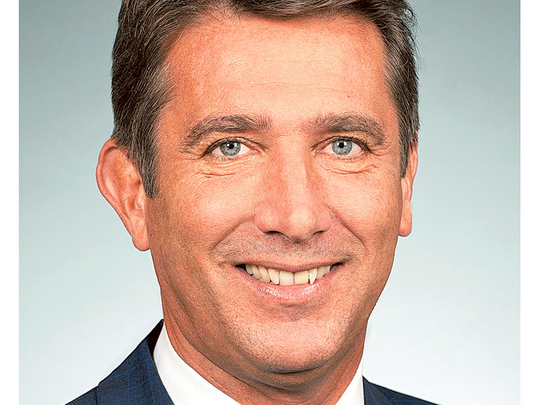
Abu Dhabi: Gulf countries and shale producers are feeling the heat as oil prices continue to plunge due to over production and weak demand. However, the Gulf countries are better placed because of huge cash reserves when compared to shale producers, analysts said.
From $115 in June last year, global benchmark Brent has dropped to less than $45 on Tuesday. West Texas Intermediate, the US benchmark, was trading at 38.97 per barrel at 1:21pm UAE time.
The number of rigs in the US has been falling steadily since oil prices started to decline. From 1,609 rigs in last October, the number of shale rigs fell to 674 rigs this month.
According to the US Energy Information Administration’s Drilling Productivity Report (DPR), crude oil production in August from seven major US shale plays is expected to decline by 91,000 barrels a day to 5.36 million barrels a day.
Louis Bresland, Alix Partners Managing Director and head of the firm’s Middle East Oil, Gas & Chemicals practice told Gulf News that shale producers have greatly impacted, but most have used this as an opportunity to increase productivity and reduce lifting costs.
“In particular, it has impacted the decisions for new investments. So, even if the shale production has not slowed down, it might in the future if the situation is maintained long enough.”
On the other hand, Saudi Arabia and the UAE, both with high fiscal reserves generated by high oil prices over the last few years, have enabled those countries to maintain a strong level of public spending.
The members of the Organisation of the Petroleum Exporting Countries (Opec) who were affected are those who have high fiscal break even like Iraq or Iran and those with high production costs such as Venezuela or Angola, Bresland said.
He said Opec decision to not cut production to prop up prices is based on a long-term view where shale decisions are more short-term. “The rightness or not of the Opec decision will be measured on a longer time frame.”
Opec pumped an average of 31.5 million barrels per day in July. The group refused to cut production to prop up oil prices at their annual meeting in June.
“Opec’s decision has caused oil prices to fall and has dealt a big blow to shale producers. We are starting to see drops in US production and considering a large part of that production comes from shale, we would think shale producers are impacted,” said Daniel Ang, an Investment Analyst from Singapore based Phillip Futures told Gulf News.
He said countries with deeper pockets would likely continue to pump and fight for market share. “On the contrary, countries without that luxury would likely be entering agreements to swap oil for other commodities in order get rid of their excess oil.”
Gulf countries are undertaking reforms in subsidies to overcome budget deficits. The UAE has cut fuel subsidies and increased petrol prices by more than 20 per cent in a landmark decision last month. New prices for the month of September will be announced at the end of this week.
Ratings agency Fitch has forecast budget deficits of 13 per cent and 10.9 per cent of GDP for Saudi Arabia and Bahrain in 2015.
While Opec’s decision has led to a significant decline in rig count in the United States, it has also enabled the US shale oil producers to trim the fat, Mamdouh G Salameh, an international oil economist and consultant to World Bank said.
“In some of the shale oil plays, the break-even price for shale production has gone down to $60 a barrel compared with $70-85 a barrel before Opec’s decision.”
He said Opec members are projected to lose around $340 billion this year. “They are definitely sustaining more losses than US shale oil producers.”
“Opec has no alternative but to cut their production immediately by a minimum of 2 million barrels a day. That is the only way to stem the glut in the market.”












